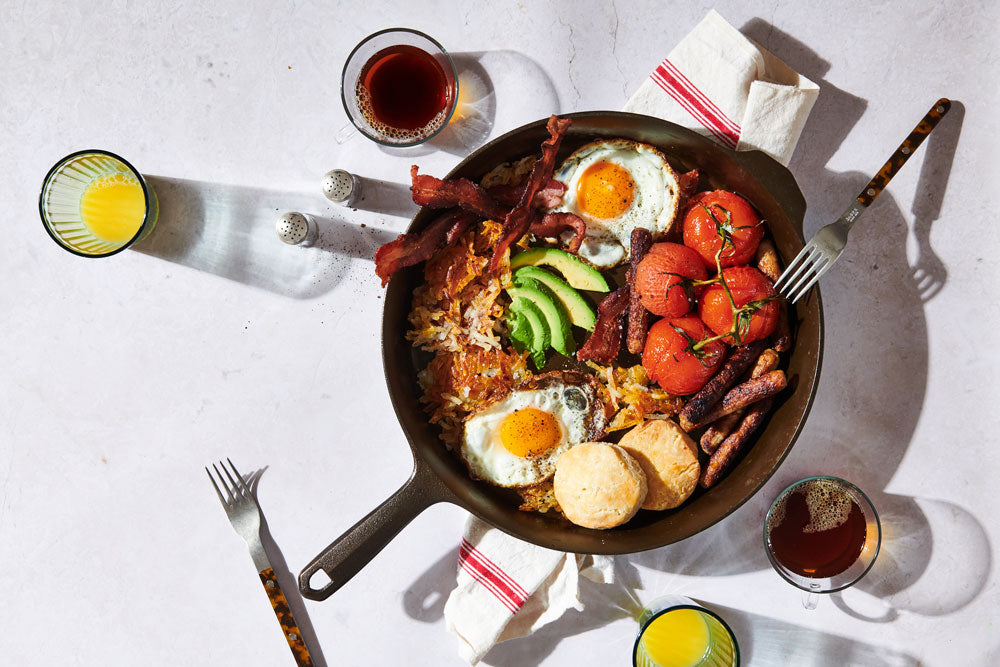If you’re the proud owner of a No.12 or No.16 Field Skillet, the following tips will help you get the most out of your XL and XXL cookware.
Rotate and Repeat
While nothing beats cast iron at retaining heat, any size of cast iron skillet will have its relative hotspots, though this feature (not a flaw; read on) is more noticeable in larger pans. When we want to start with an evenly heated cooking surface, we preheat our skillet over a medium flame for several minutes, rotating the pan a quarter turn every minute or so. If you’re working with a smaller stovetop, you can also heat the No.16 Double-Handled Skillet over two burners, rotating the pan in a similar fashion.
Cook Fatty Ingredients First
One of our favorite ways to use the No.16 Double-Handled Skillet is to cook up a big breakfast or brunch spread, essentially using the skillet as a large, round griddle. When doing so, we start by cooking fatty proteins—typically bacon or sausage, occasionally a juicy steak—first, which renders fat that can be used to cook (and flavor) our hash browns, eggs, and other components.
Combine and Conquer
With many recipes, a larger skillet’s abundance of space also allows us to combine a step or two—or dirty less cookware. Proteins and sides can be cooked in unison, and burgers, buns, and more can be prepared at the same time.






